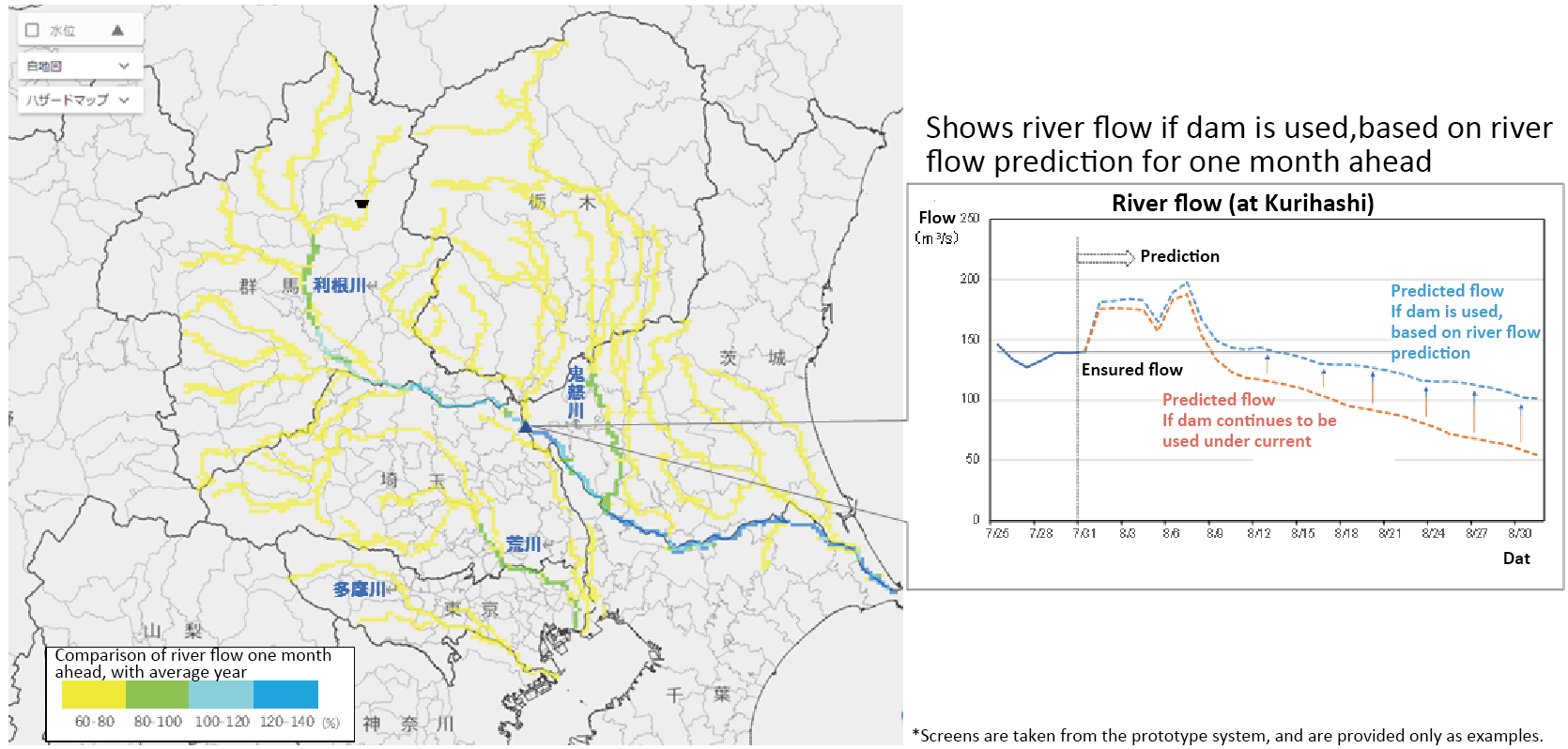2023.11.28
CTI Engineering Co., Ltd. has developed a real-time low-water prediction system for the Tokyo metropolitan area, that predicts and responds to abnormal droughts caused by climate change.
Technology & Research
CTI Engineering has built a prototype low-water prediction system for the Tonegawa, Arakawa, and Tamagawa river systems, that makes use of weather forecast data (air temperature and precipitation) for one month ahead. By predicting abnormal droughts caused by climate change and other factors and distributing water shortage information before the shortage actually occurs, this new system would allow water suppliers and consumers to respond properly and efficiently, and would help to increase awareness for water conservation among both businesses and residents.
1. Background
Increasingly frequent and severe flooding has been gaining attention as one manifestation of climate change. However, the opposite is also true, as seen in the increasingly severe irrigation damage noted all over the world, such as abnormal droughts in China and the US. Japan is no exception. In order to handle abnormal droughts, we will need to predict river flows based on long-term weather forecasts while making appropriate use of water.
2. Technology features and details
The Tonegawa, Arakawa, and Tamagawa river systems serve as the major sources of water for the Tokyo metropolitan area, and an abnormal drought in this area would cause enormous damage. We have developed a low-water prediction system for these river systems that makes use of weather forecast data which has become remarkably accurate and runoff prediction technology.
This system predicts watershed runoff and river flows based on predicted rainfall for one month ahead, distributed weekly from the Japan Meteorological Business Support Center (JMBSC), allowing stakeholders to consider and apply drought measures based on river conditions, such as supplying water from dams or restricting water intake.
These predictions are distributed through RisKma, a water-related disaster risk mapping system developed by CTI Engineering, in anticipation of serving as information useful for both public and private water suppliers and users to form a consensus on measures to implement.

Figure: Example river condition prediction on RisKma screen
3. Future outlook
This system is planned to go into full-scale operation in the Tokyo metropolitan area during fiscal 2024.
Although service will only be offered in the Tokyo metropolitan area, we plan to expand service all over Japan to help respond to drought risks throughout the nation.